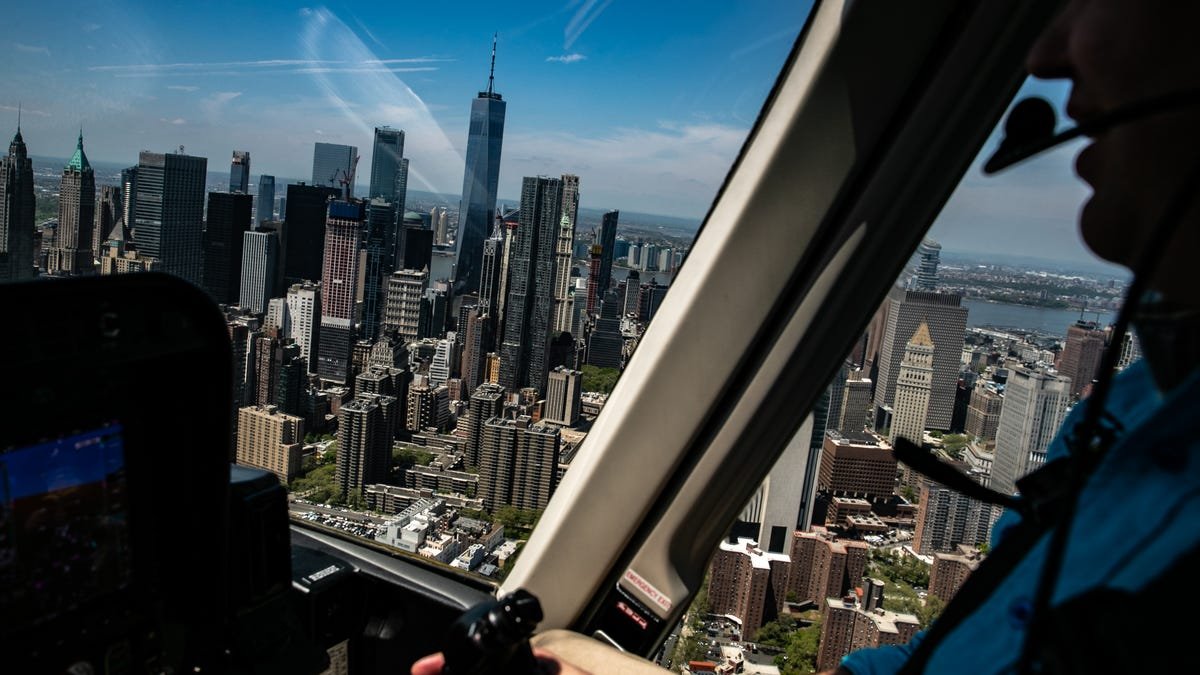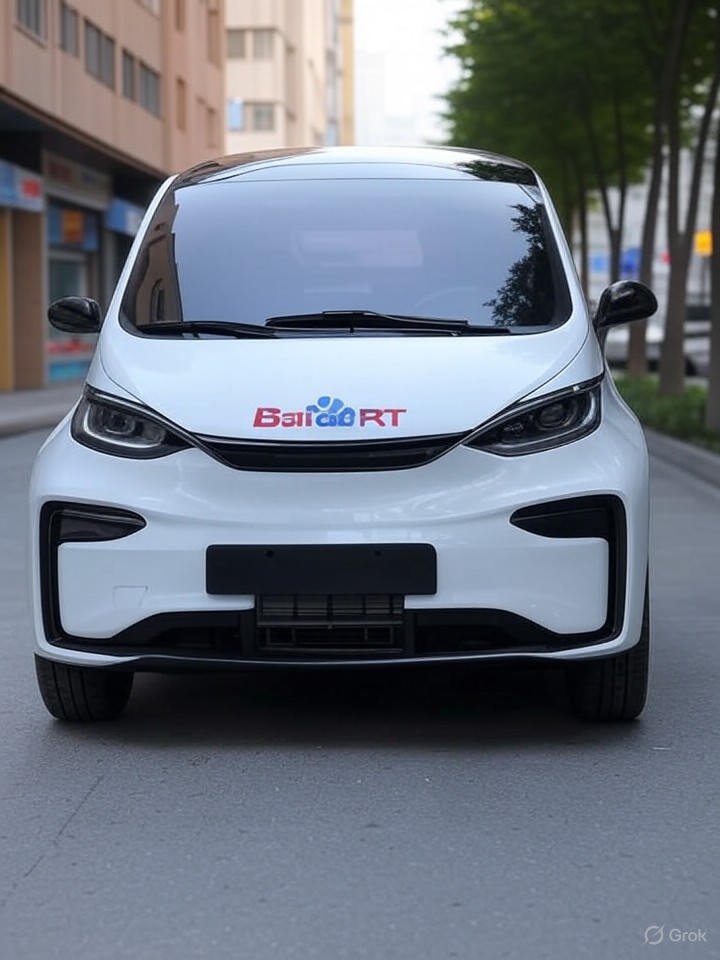Ride & Mobility
Joby buys Blade copter ride-share business for $125 million

Joby Aviation Inc. said it plans to buy the helicopter ride-share business of Blade Air Mobility Inc. for as much as $125 million in stock or cash as the electric aviation pioneer seeks to expand its battery-powered air taxis into a ready-made market for its aircraft.
The acquisition encompasses all of Blade’s passenger business, including operations in the United States and Europe, as well as the Blade brand, Joby said in a statement, confirming an earlier report by Bloomberg. Blade’s medical division will remain a public company and rebrand, while partnering with Joby on medical transportation.
Joby shares advanced 18.8% Monday. Blade surged 17.2%. The transaction is expected to close in coming weeks, Joby said.
Blade sells per-seat helicopter trips from New York City to nearby airports and resort towns. The company, which went public through a merger with a special purpose acquisition company in 2021, hasn’t reported an annual a profit since it listed. The company’s shares have fallen 10% this year, giving it a market value of $309 million.
Backed by Toyota Motor Corp., Joby expects to have five aircraft in one of the final phases of certification next year as it aims to start commercial flights in early 2026. The $13.6 billion company announced plans last month to double production capacity at its plant in Marina, California, to manufacture up to 24 aircraft a year.
According to Joby, Blade flew more than 50,000 passengers in 2024 from a network of 12 urban terminals. Joby, which plans to carry its first passengers in Dubai next year, said the purchase will allow it to speed its commercial efforts by using Blade’s existing infrastructure and customer base.
Ride & Mobility
Tesla Launches Ride-Hailing Service in Austin and California

Elon Musk has long promised that Tesla Inc. would revolutionize urban mobility with autonomous vehicles, and as of mid-2025, the company’s ride-hailing ambitions are finally taking shape amid regulatory hurdles and technological breakthroughs. What began as internal testing in the San Francisco Bay Area has evolved into a limited public rollout, with Tesla’s app now offering rides in select cities like Austin, Texas, and parts of California. This push comes at a pivotal time for the electric-vehicle giant, which reported robust quarterly earnings earlier this year, partly fueled by optimism around its Full Self-Driving (FSD) software.
Investors and industry watchers are closely monitoring these developments, as Tesla seeks to compete with established players like Uber Technologies Inc. and Alphabet Inc.’s Waymo. According to a recent report from TipRanks.com, Tesla’s service is already operational for a small user base, with plans for broader expansion by year’s end, pending approvals.
Regulatory Roadblocks and Strategic Pivots
California regulators have been a key battleground. Tesla applied for initial permits in February, as detailed in a Reuters article, marking the first step toward a full robotaxi launch. However, the service’s debut in San Francisco last week was notably muted—no mention of self-driving capabilities, likely due to ongoing restrictions from the California Public Utilities Commission (CPUC).
Posts on X, formerly Twitter, reflect growing excitement and skepticism among Tesla enthusiasts. Users have shared unverified claims of unsupervised FSD rides starting in Texas by June, with some predicting a nationwide rollout covering half the U.S. population by year-end, though these timelines often come with caveats about regulatory approval. Such online buzz underscores the high stakes, but industry insiders caution that these are speculative and not definitive indicators of progress.
Technological Foundations and Market Impact
At the core of Tesla’s strategy is its FSD technology, which Musk claims is 1,000% safer than human drivers. A Verge report from late 2024 revealed that employee testing in the Bay Area had been underway for months, building a data trove to refine algorithms. Recent updates to the Robotaxi app, as covered in The Cool Down, include seamless integration for summoning autonomous vehicles, helping Tesla rebound from earlier sales dips.
Financially, this gambit could unlock trillions in value. Analysts at Nasdaq estimate that even limited operations could generate significant revenue, with broader adoption hinging on overcoming permitting delays. Tesla’s job postings, highlighted in a Drive Tesla piece, suggest aggressive hiring for expansion into new markets, signaling confidence despite challenges.
Competitive Pressures and Future Horizons
Rivals aren’t standing still. Waymo has years of headway in autonomous operations, and Uber’s vast network poses a formidable threat. Yet Tesla’s vertical integration—controlling everything from vehicle production to software—gives it a unique edge, as noted in recent TechCrunch Mobility coverage, which describes the launch as a bold “gambit” amid evolving transportation dynamics.
Looking ahead, Musk’s vision extends to affordable models and FSD licensing deals, potentially in China and Europe by late 2025. Posts on X speculate about Cybercab production ramping up in 2026, but regulatory scrutiny remains a wildcard. For now, Tesla’s ride-hailing service represents a cautious step toward autonomy, blending human-operated rides with glimpses of a driverless future.
Investor Sentiment and Broader Implications
Wall Street’s reaction has been mixed. Shares surged 21% following early announcements, per TipRanks.com, but volatility persists amid approval uncertainties. A Investing.com report warns that full robotaxi deployment could take years, echoing CPUC statements that Tesla isn’t yet cleared for public self-driving transport.
For the electric-vehicle industry, Tesla’s moves could accelerate adoption of autonomous tech, pressuring competitors to innovate. Insiders see this as a litmus test for Musk’s ambitious timelines, with success potentially reshaping urban transit and failure risking reputational damage. As one X post put it, this is “the largest AI project in the world” entering a new chapter—hyperbole perhaps, but indicative of the transformative potential at stake.
Ride & Mobility
Lyft and Baidu Partner for Robotaxi Launch in UK, Germany in 2026

A Groundbreaking Partnership Takes Shape
In a move that could reshape the future of urban mobility in Europe, U.S. ride-hailing giant Lyft has announced a strategic partnership with Chinese tech behemoth Baidu to introduce robotaxi services in the United Kingdom and Germany starting next year. This collaboration marks Baidu’s inaugural venture into the European autonomous vehicle market, leveraging its advanced Apollo Go platform, which has already demonstrated impressive capabilities in China. According to details shared in a recent Reuters report, the partnership aims to deploy Baidu’s electric RT6 robotaxis on Lyft’s platform, pending necessary regulatory approvals.
The initiative comes at a pivotal time for both companies. Lyft, seeking to expand beyond its North American stronghold, recently finalized its entry into Europe through other means, setting the stage for this autonomous expansion. Baidu, on the other hand, brings a proven track record with over 11 million rides completed in China, as highlighted in a Bloomberg article. This deal not only extends Baidu’s global footprint but also aligns with its broader strategy of partnering with ride-hailing firms like Uber to penetrate international markets.
Navigating Regulatory and Technological Hurdles
The rollout is slated for 2026, with initial launches in the UK and Germany, two markets known for their stringent safety standards and progressive stance on innovation. Industry insiders note that securing regulatory nods will be crucial, involving rigorous testing and compliance with local laws on data privacy and vehicle safety. A TechCrunch piece emphasizes that the companies are optimistic about approvals, drawing on Baidu’s experience in densely populated Chinese cities where its robotaxis have operated successfully without major incidents.
Technologically, the RT6 vehicles represent the cutting edge of autonomous driving, equipped with advanced sensors, AI algorithms, and redundant systems for reliability. This partnership allows Lyft to integrate these vehicles seamlessly into its app, offering users a driverless option alongside traditional rides. As reported by Engadget, the fleet’s debut in 2026 could position Europe as a new battleground for robotaxi dominance, challenging incumbents like Waymo and Cruise.
Market Implications and Competitive Dynamics
For industry observers, this expansion signals a acceleration in the global race for autonomous mobility. Lyft’s shares jumped following the announcement, as noted in an Investing.com update, reflecting investor confidence in the revenue potential from reduced operational costs associated with driverless fleets. Baidu, already a leader in China’s robotaxi sector, stands to gain valuable data and insights from European operations, potentially refining its technology for diverse driving conditions.
However, challenges loom, including public acceptance and integration with existing infrastructure. In the UK and Germany, where public transport is robust, robotaxis must prove their value in terms of affordability and efficiency. A CNBC analysis points out that Baidu’s global ambitions through deals like this could face geopolitical scrutiny, given U.S.-China tech tensions, yet the partnership underscores a pragmatic approach to cross-border innovation.
Economic and Societal Impacts on the Horizon
Economically, the introduction of thousands of RT6 vehicles, as detailed in a StockTitan news release, could create jobs in maintenance and oversight while disrupting traditional taxi services. For cities like London and Berlin, this means potential reductions in traffic congestion and emissions, aligning with EU sustainability goals.
On a broader scale, this venture highlights the convergence of Eastern and Western tech ecosystems, fostering advancements that could accelerate the adoption of autonomous vehicles worldwide. As Lyft and Baidu forge ahead, industry insiders will watch closely to see if this model sets a precedent for future expansions, potentially transforming how Europeans commute in the coming decade.
Ride & Mobility
Why Did Careem Shut Down Ride-Hailing in Pakistan? | A Deep Dive

Careem has officially shut down its ride-hailing operations in Pakistan. After nearly a decade of redefining urban mobility, the once-trusted app is no longer offering car rides in Pakistan. But what led to this surprising exit?
In this in-depth explainer, we take you behind the scenes of Careem’s rise, impact, and eventual departure from the Pakistani ride-hailing market. From its revolutionary entry in 2015 to becoming a household name in cities like Karachi, Lahore, and Islamabad — Careem was not just a tech company, it was a social movement. It empowered women, professionalized drivers, and introduced millions to the convenience of app-based commuting.
So why did it fail?
-

 Brand Stories2 weeks ago
Brand Stories2 weeks agoBloom Hotels: A Modern Vision of Hospitality Redefining Travel
-

 Brand Stories1 week ago
Brand Stories1 week agoCheQin.ai sets a new standard for hotel booking with its AI capabilities: empowering travellers to bargain, choose the best, and book with clarity.
-

 Destinations & Things To Do2 weeks ago
Destinations & Things To Do2 weeks agoUntouched Destinations: Stunning Hidden Gems You Must Visit
-

 Destinations & Things To Do1 week ago
Destinations & Things To Do1 week agoThis Hidden Beach in India Glows at Night-But Only in One Secret Season
-

 AI in Travel2 weeks ago
AI in Travel2 weeks agoAI Travel Revolution: Must-Have Guide to the Best Experience
-

 Brand Stories1 month ago
Brand Stories1 month agoVoice AI Startup ElevenLabs Plans to Add Hubs Around the World
-

 Brand Stories3 weeks ago
Brand Stories3 weeks agoHow Elon Musk’s rogue Grok chatbot became a cautionary AI tale
-

 Asia Travel Pulse1 month ago
Asia Travel Pulse1 month agoLooking For Adventure In Asia? Here Are 7 Epic Destinations You Need To Experience At Least Once – Zee News
-

 AI in Travel1 month ago
AI in Travel1 month ago‘Will AI take my job?’ A trip to a Beijing fortune-telling bar to see what lies ahead | China
-

 Brand Stories2 weeks ago
Brand Stories2 weeks agoContactless Hospitality: Why Remote Management Technology Is Key to Seamless Guest Experiences













You must be logged in to post a comment Login